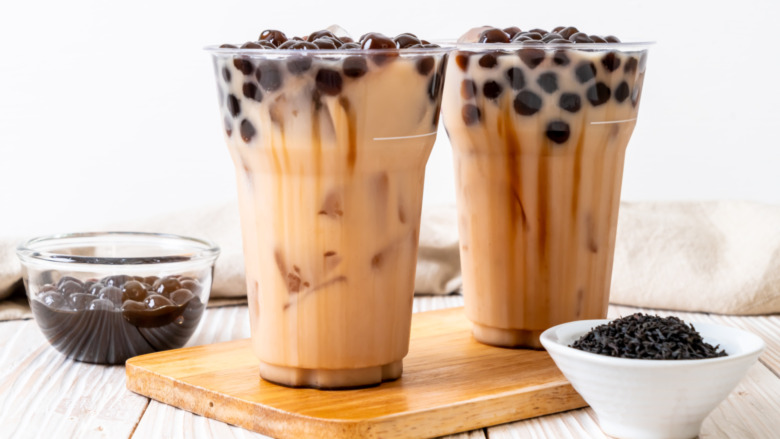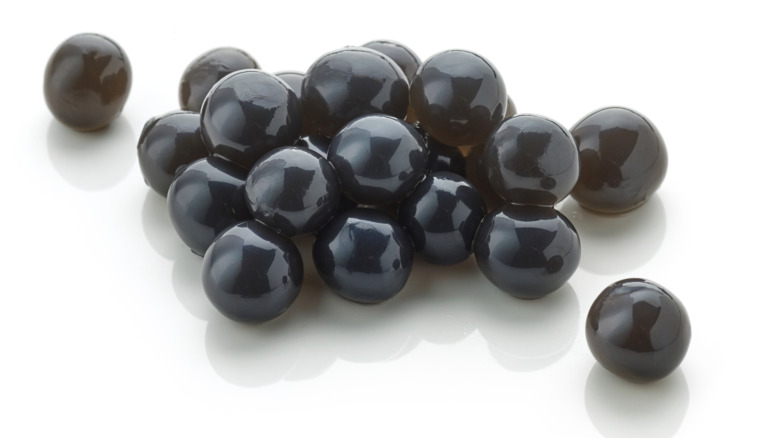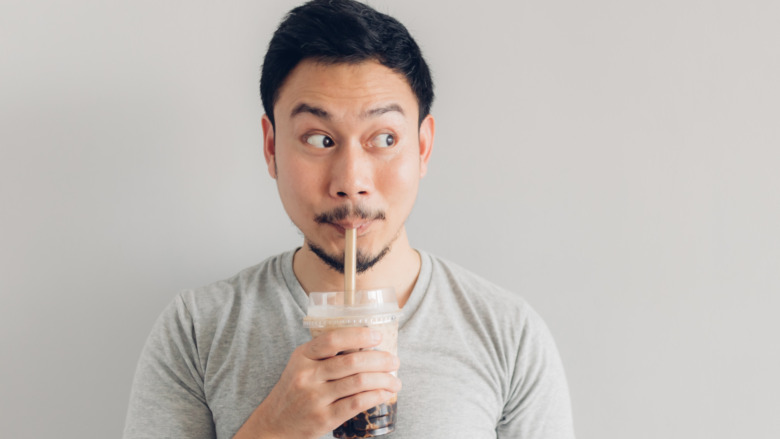The Real Difference Between Boba And Bubble Tea
Boba and bubble tea are staples across Asia, and in recent years their popularity has exploded around the globe. It's a drink that is perfect year-round; it's refreshing, it's delicious, and it's got the perfect touch of sweetness to get you through the day. On top of all that, it's a wonderful way to experience another culture and truly grow to appreciate it. What's not to love?
If you are unfamiliar, bubble tea or boba is a drink made of tea and sweetened milk which is served over ice with tapioca pearls in it (via Eater). When you drink it, you get the cool, slightly sweetened tea that coats your mouth and is super refreshing, and you get the pearls that you have to chew through, which creates a fuller eating and drinking experience that you don't get with other teas.
If you've wondered just how to order and what to call this perfect drink, you're not alone. Here's your crash course in the difference between bubble tea and boba.
What is the proper term for this drink?
According to Eater, The U.S. is divided on its terminology usage, citing that the east coast typically says bubble tea while the west coast typically says boba. What is the correct term for this perfect drink, though?
According to the website Talk Boba, the drink has multiple names. It's referred to as bubble tea, boba, pearl tea, milk tea, tapioca tea, and more. However, all of these refer to the same drink consisting of tea with tapioca pearls. They do note, though, that technically the word "boba" refers to the tapioca pearls themselves, and that this was the word's original definition. The colloquial usage of "boba" to refer to the drink specifically is new, but completely acceptable.
The boba pearls themselves are made from tapioca starch. This starch comes from the cassava root, a plant native to South America. The tapioca pearls offer a texture that the Taiwanese call "Q" or "QQ," according to Talk Boba. This texture is untranslatable, but you'll know what it is if you've had bubble tea before. It's a pleasurable texture to eat, and it makes this drink all the more fun.
Stepping out of one's bubble
While the terminology may fluctuate, what remains important about bubble tea is its origins. As explained by Talk Boba, bubble tea was born in Taiwan in the 1980s. Tapioca pearls and milk tea were both mainstays in Taiwanese culture at the time, but it wasn't until the 1980s that they were combined to make bubble tea.
While there are differing stories regarding where boba was officially created and who was the first to serve it, Eater notes that the origin of its name is not in dispute. Apparently, "boba" was the nickname of Hong Kong actress, Amy Yip, who was considered the Marilyn Monroe of '80s Chinese cinema. Thanks to her voluptuous assets, she earned the nickname which was eventually used to market the tea! A zesty story like this is something a Western audience wouldn't know just from drinking bubble tea from our local shop, but it does show that we can and should always look into the origins of things we love from other cultures.
In the end, you can call the drink bubble tea or boba. Both are acceptable, and both are delicious.


